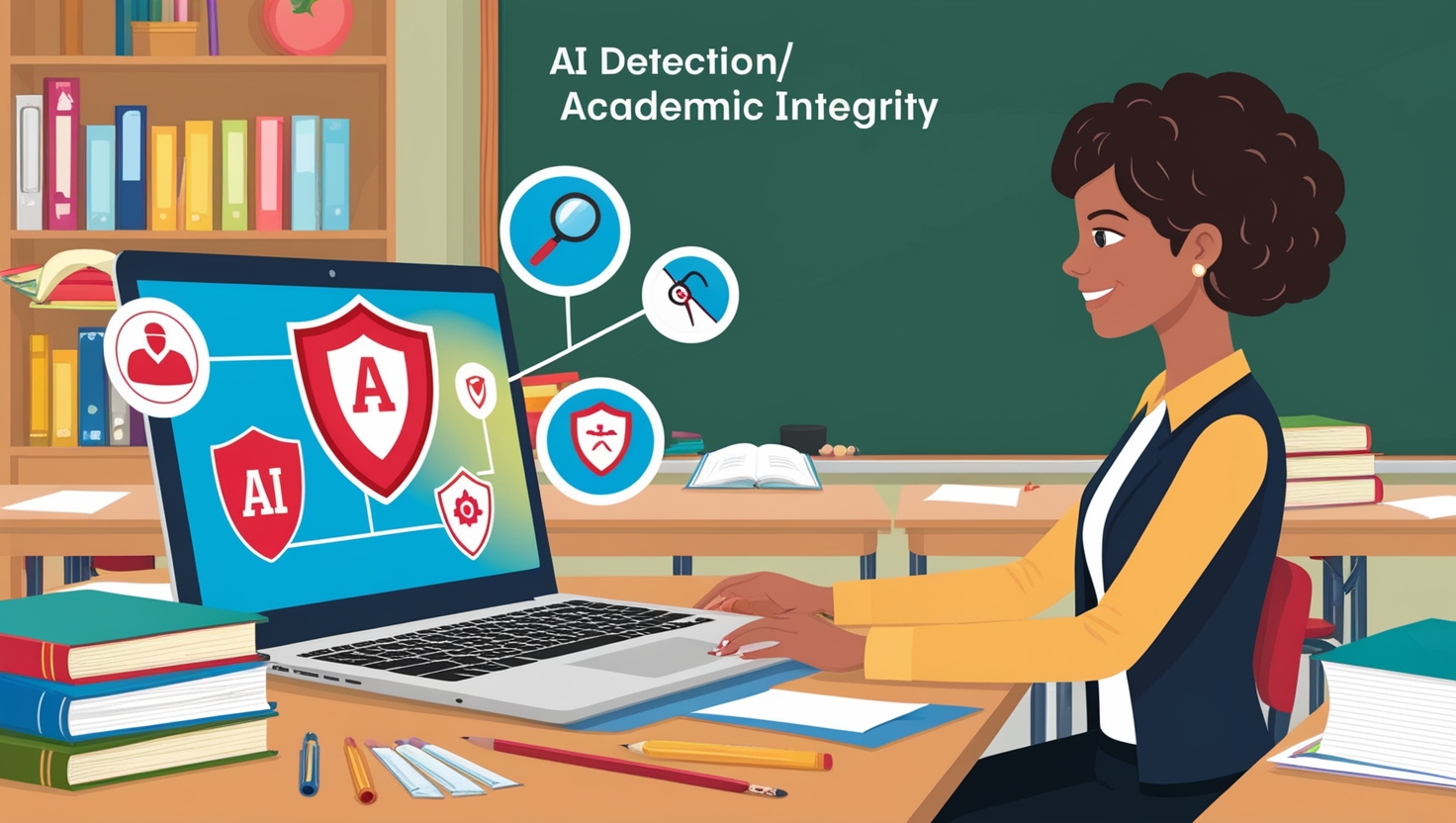One such challenge is the rise of AI-generated content, which can be used by students to circumvent plagiarism detection. To counter this, teachers need reliable AI detectors. Here, we explore the best AI detectors available for educators to ensure the authenticity of student work.

1. Turnitin
Overview: Turnitin is a well-known name in the education sector, widely used for its plagiarism detection capabilities. Recently, it has integrated AI detection features to identify content generated by AI tools.
Key Features:
- Comprehensive Database: Turnitin checks submissions against an extensive database of academic papers, web pages, and student assignments.
- AI Detection: The AI detection tool analyzes text to identify patterns indicative of AI-generated content.
- User-Friendly Interface: Easy to navigate, with detailed reports that highlight potential issues.
Pros:
- High accuracy in detecting both traditional plagiarism and AI-generated text.
- Detailed reports that help educators understand the nature of flagged content.
Cons:
- Subscription-based service, which might be costly for some institutions.
- Some false positives in AI detection, requiring manual review.
2. OpenAI’s GPT Detectors
Overview: OpenAI, the organization behind GPT-3 and GPT-4, has developed tools specifically designed to detect text generated by its own AI models.
Key Features:
- High Precision: Leveraging its deep understanding of AI-generated text patterns, OpenAI’s detectors are highly precise.
- Integration Capabilities: Can be integrated into various educational platforms and Learning Management Systems (LMS).
Pros:
- Direct insight into AI-generated text, given OpenAI’s expertise.
- Continually updated to keep pace with advancements in AI text generation.
Cons:
- Limited to detecting content generated by specific OpenAI models.
- Requires technical integration, which might be a barrier for some users.
3. Copyleaks
Overview: Copyleaks is a versatile plagiarism detection tool that has expanded its capabilities to include AI content detection.
Key Features:
- Multi-Language Support: Detects AI-generated content in multiple languages, making it ideal for diverse classrooms.
- Real-Time Detection: Provides instant results, allowing teachers to quickly assess the authenticity of student submissions.
Pros:
- Supports a wide range of file formats and languages.
- Offers both plagiarism and AI content detection in one platform.
Cons:
- Subscription model can be expensive for small institutions.
- Some users report a steep learning curve for advanced features.
4. Grammarly
Overview: While primarily known for grammar and plagiarism checking, Grammarly has introduced AI content detection features.
Key Features:
- Writing Enhancement: In addition to detecting AI-generated text, Grammarly helps improve overall writing quality.
- Browser Extension: Easy to use with a browser extension, making it accessible for both students and teachers.
Pros:
- Multi-functional, offering grammar, plagiarism, and AI detection in one tool.
- Intuitive interface suitable for users at all levels of tech proficiency.
Cons:
- Not as specialized in AI detection as some other tools.
- Free version has limited features; full functionality requires a premium subscription.
Content at Scale AI Detector
Overview: Content at Scale AI Detector is a tool specifically designed to identify AI-generated content, catering to the growing need for precise AI detection in academic settings.
Key Features:
- Advanced AI Algorithms: Uses sophisticated algorithms to analyze text and detect AI generation.
- Detailed Analysis: Provides in-depth reports on the likelihood of text being AI-generated, with insights into specific patterns and anomalies.
Pros:
- Highly accurate in detecting AI-generated content.
- User-friendly interface with comprehensive reports.
Cons:
- Relatively new, so it may lack the broader user base and long-term validation of more established tools.
- Premium features may come at a cost.
Conclusion
In the age of AI, maintaining academic integrity requires advanced tools capable of detecting AI-generated content. The best AI detector for teachers will depend on the specific needs and resources of their institution. Turnitin remains a robust choice for its comprehensive detection capabilities, while OpenAI’s tools offer unparalleled precision for detecting content generated by its models. Copyleaks and Grammarly provide versatile solutions, and TurnitAI offers a specialized approach for educators looking to stay ahead of AI-driven academic dishonesty. By leveraging these tools, teachers can uphold the standards of originality and integrity in their classrooms.
